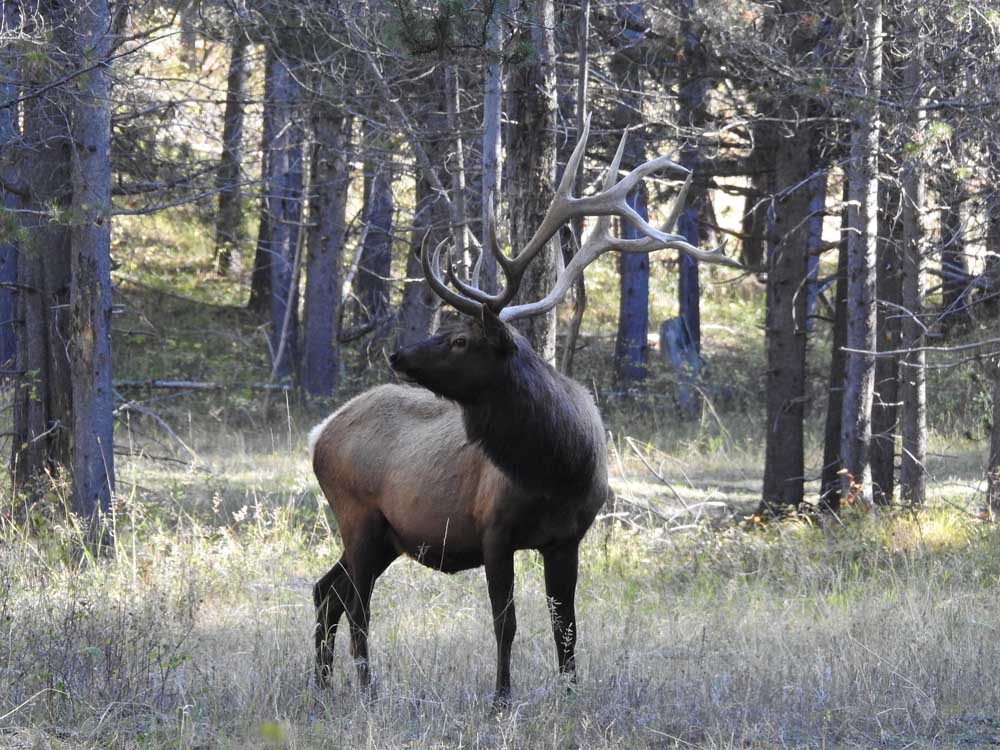Elk bugles and what they mean
Published 4:00 am Friday, September 2, 2022

- In late August and early September, bull elk break away from the bachelor groups and stake out their own territory. At this stage of the season, bulls "locate" by bugling while they establish their territory.
When I see the moon full after the middle of August, it takes me back.
While driving one night, I pulled over to sleep when I could no longer keep my eyes open. I was in elk country, and, with my window cracked, I heard elk chirps and mews and other assorted elk noises. Opening my door, I crept over to the edge of the canyon and looked down. In the moonlight, I watched a herd of 400 elk move up a canyon. It was a rare moment to hear them in the still night air.
Trending
Elk language is complex. Bulls, cows and calves communicate in chirps and mews when they are on the move and when they are relaxed. They grunt (often to get another elk to show itself) and bark (as a warning signal). And cows bugle, in the stress of giving birth and when gathering the herd to move. Another female vocalization is the estrus call of a cow in heat.
Elk hiss, whine, cry, moan, rake their antlers and stomp their hooves, but because of their volume, the sounds we are most likely to hear in August, September, October and November are bull bugles and chuckles.
We can hear them in dark timber in the Ochocos, in the Snake River breaks and haunting the benches of the Coast Range. The sounds drift out of the canyons and echo in the valley. We hear them in the dark, sometimes all night long, and, when conditions are right, we hear bugles in the early morning and even at noon when a bull sounds off to declare his worth.
It’s easy to say it is a mating call, but bull vocalizations can mean a number of things. Every year in August, my friend Troy Neimann and I put on an elk hunting seminar in which we attempt to sort out elk vocalizations and what they mean. Neimann likes to break down bull elk bugles into their components, like diagramming a sentence, to figure out what the bull is saying.
The call we are most likely to hear in August and early September is the locate bugle. “It is short in duration,” Neimann says, “lasting about one-and-a-half to two seconds.”
It consists of a clean high note or a double note. When a bull “locates,” it is non-aggressive, communicating bull-to-bull or bull-to-cow, like reaching out to stay in touch with the rest of the herd. I think of it as advertising.
Trending
The scream bugle is different. A bull-to-bull call, this one establishes dominance, puts a subordinate bull in its place. One bull might locate and another, irritated, might scream. It is aggressive, a challenge, intimidation.
The display is the classic full bugle, the one we hear most. Neimann calls it a Hollywood bugle.
“It starts with a growl; it carries several notes and ends with a growl.” The display is bull-to-cow and bull-to-bull communication and says, “I am worthy.” It is often used when the herd bull is displaying its antlers for social ranking and breeding worthiness.
Another common bugle, heard mid-September through the end of October, is the herding bugle. Calling to his cows, the bull gathers them to put them away, to hide them from an interloper. There is frustration in the sound and a good chance the bull will put his cows away and come back to fight.
At the end of a bugle, sometimes the bull chuckles. And, for the hunter, the challenge is to figure out if it is bull-to-bull or bull-to-cow talk.
We call them love chuckles when we hear the slow, plaintive, seductive cadence — a bull calling for cows. A sharp, staccato series of chuckles means this bull is ready to fight.
Once, on the edge of a meadow in the Heppner Unit, we cow-called to a bull in the distance. He threw back a display bugle and silenced all the other bulls in the neighborhood, except for one bull nearby who love-chuckled, calling so low it was a whisper. Although he sounded sick for love, he wouldn’t show himself. We worked around him and found the spot where the big bull had bedded, found his saliva in the dirt where he had sputtered calling back to us.
The next morning, calling solo, I had a bull herd-bugle and gather his cows. I waited for 45 minutes and saw him come back to fight. When I set up on the trail I thought he’d take, he took another one. He paused at 65 yards when I needed him at 20 to be in range of my recurve bow. I watched him go. But I watched with a smile because I knew I’d gotten under his skin.








